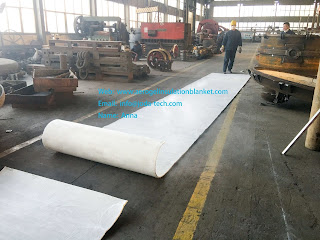Comparison between Aerogel Insulation and Conventional Insulation
There are a diverse range of materials used for insulation. In this article, we will list out the comparison between five most common types’ wall insulation materials, fiberglass, mineral wool, cellulose, polyurethane foam and polystyrene foam with aerogel insulation.
1. Fiberglass
Fiberglass is the most common insulation. Because of how it is made, by effectively weaving fine strands of glass into an insulation material, fiberglass is able to minimize heat transfer and is an excellent non-flammable insulation material. Low cost is another benefit of fiberglass as it is readily available.
The main negative factor of fiberglass is the danger of handling it. Since fiberglass is made out of finely woven silicon, glass powder and tiny shards of glass are formed. These can cause damage to the eyes, lungs, and even skin if the proper safety equipment isn’t worn when handling fiberglass.
Aerogel insulation, four times more efficient than fiberglass, has seen reductions in cost as it gains traction in various markets and should be the insulation of choice for most applications.
2. Mineral Wool
Mineral wool actually refers to several different types of insulation: glass wool, fiberglass manufactured from recycled glass; rock wool, made from basalt or slag wool which is produced from the slag from steel mills. Mineral wool can be purchased in batts or as a loose material.
Most mineral wool does not contain additives to make it fire resistant, so in conditions of extreme heat mineral wool is not a great choice on its own. One would have to use it in conjunction with more fire resistant forms of insulation which can be more costly.
Aerogel is extremely fire resistant and is a great choice for both hot and cold temperature applications.
3. Cellulose
Cellulose insulation is perhaps one of the most eco-friendly forms of insulation. Cellulose is made from recycled cardboard, paper, and other similar materials and comes in loose form. Some recent studies on cellulose have shown that it might be an excellent product for use in minimizing fire damage. Because of the compactness of the material, cellulose contains next to no oxygen within it. Without oxygen within the heat insulation material, this helps to minimize the amount of damage that a fire can cause.
Cellulose is also one of the most fire resistant forms of insulation. However, there are certain downsides to this material as well, such as the allergies that some people may have to newspaper dust. Also, finding individuals skilled in using this type of insulation is relatively hard.
Aerogel matches Cellulose in fire resistance and as an environmentally friendly form of insulation, but is easy to install and handle.
4. Polyurethane Foam
While not the most abundant of insulations, polyurethane foams are a useful form of insulation. Polyurethane foams use non-chlorofluorocarbon (CFC) gas for use as a blowing agent. This helps to decrease the amount of damage to the ozone layer. They are relatively light, weighing approximately two pounds per cubic foot.
There are also low density foams that can be sprayed into areas that have no insulation. These types of polyurethane insulation tend to have approximately R-3.6 rating per inch of thickness.
Aerogel insulation is lighter, environmentally friendly and 2-8 times the insulation value for the same thickness.
5. Polystyrene
Polystyrene is water-proof thermoplastic foam which is a good sound and temperature insulation material. It comes in two types, expanded (EPS) and extruded (XEPS) also known as Styrofoam. The two types differ in performance ratings and cost. The more costly XEPS has an R-value of R-5.5 while EPS is R-4.
Normally, the foam is created or cut into blocks, ideal for wall insulation. The foam is flammable and needs to be coated in a fireproofing chemical called Hexabromocyclododecane (HBCD). HBCD has been brought under fire recently for health and environmental risks associated with its use.
Aerogel is highly fire resistant and does not require the application of potentially harmful coating material. In addition, Aerogel blanket can be used in both cold and hot temperature conditions with great results.
In conclusion, aerogel is more expensive, but definitely the best overall type of insulation.
Fiberglass is cheap, but requires careful handling.
Mineral wool is effective, but not fire resistant.
Cellulose is fire resistant and eco-friendly, but hard to apply.
Polyurethane is a good insulation product, though not particularly eco-friendly.
Polystyrene is a diverse insulation material, but its safety is debated.




评论
发表评论